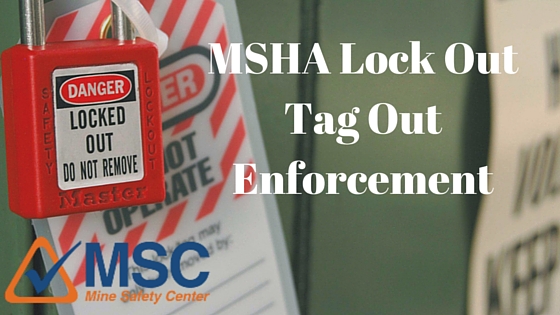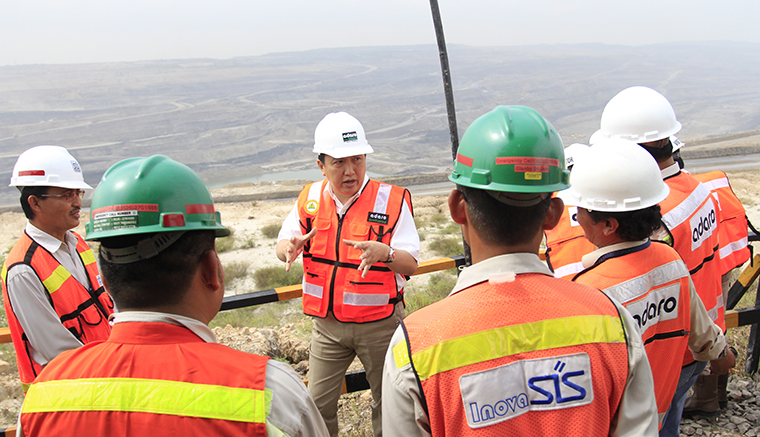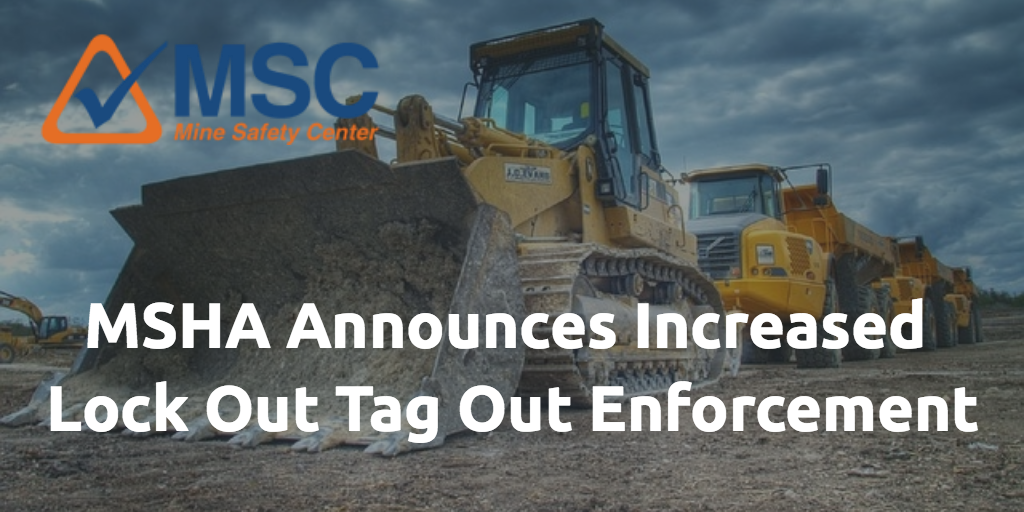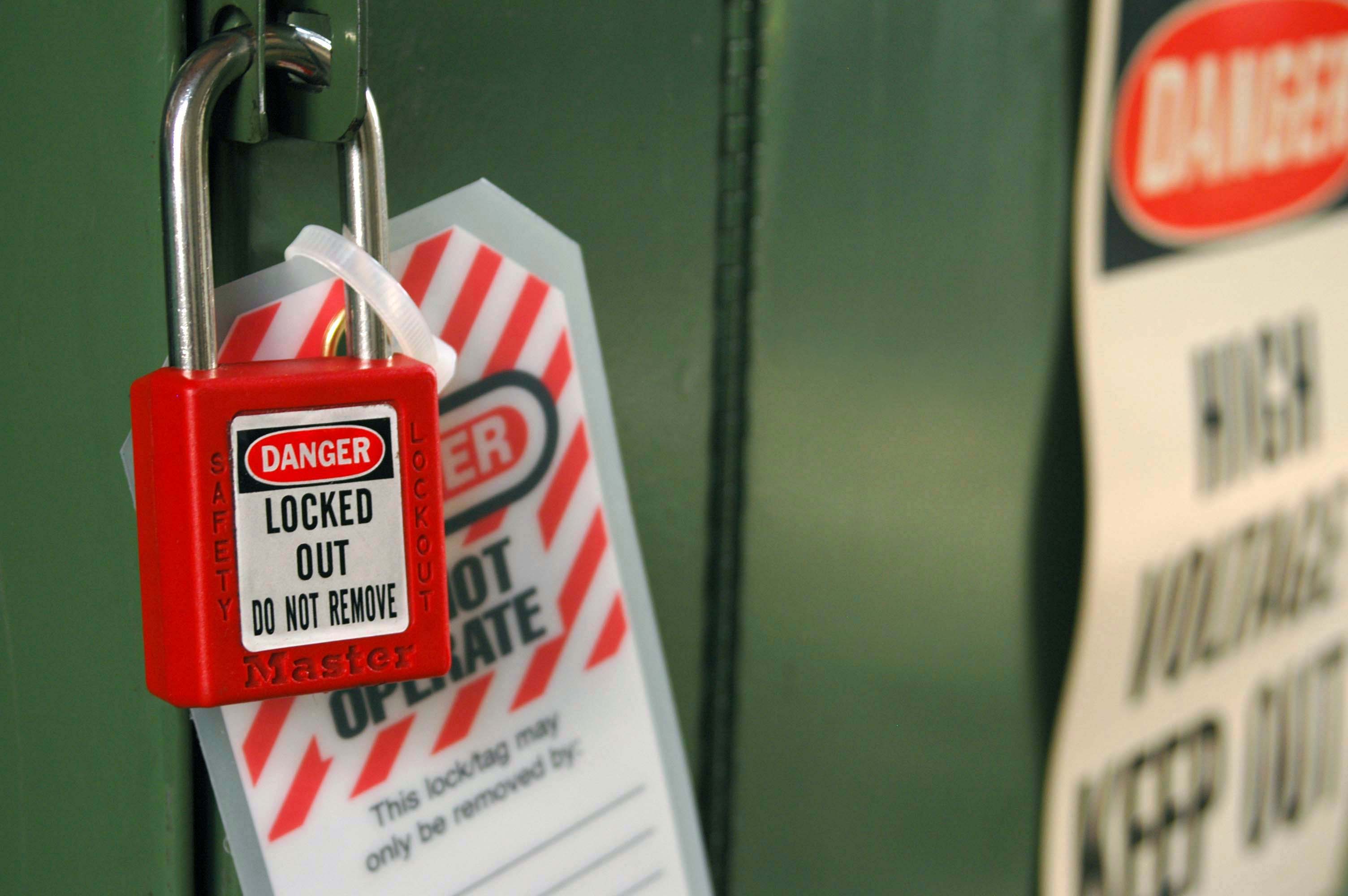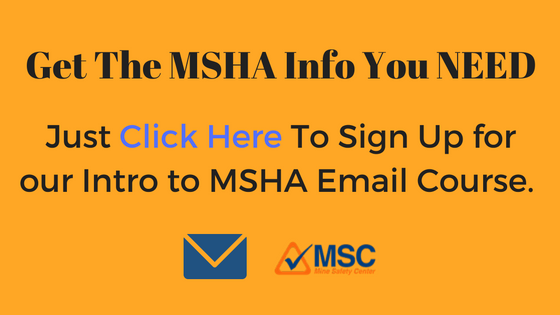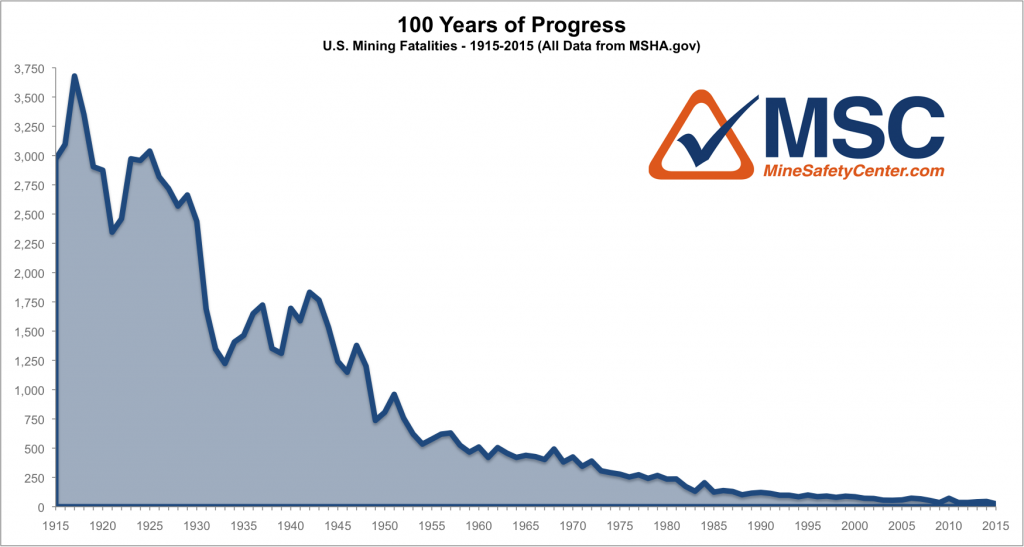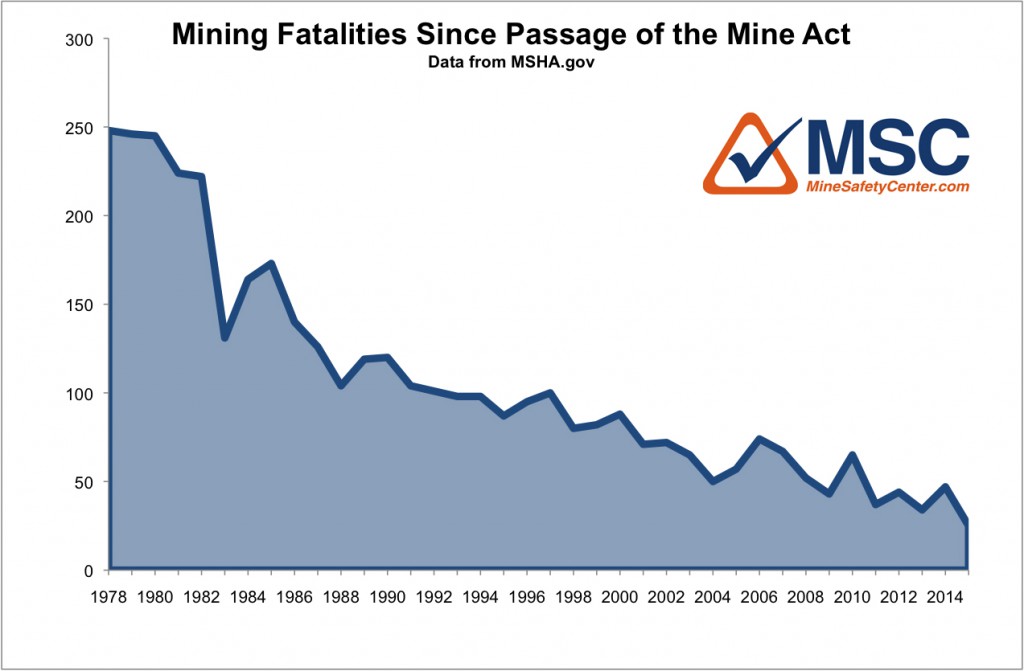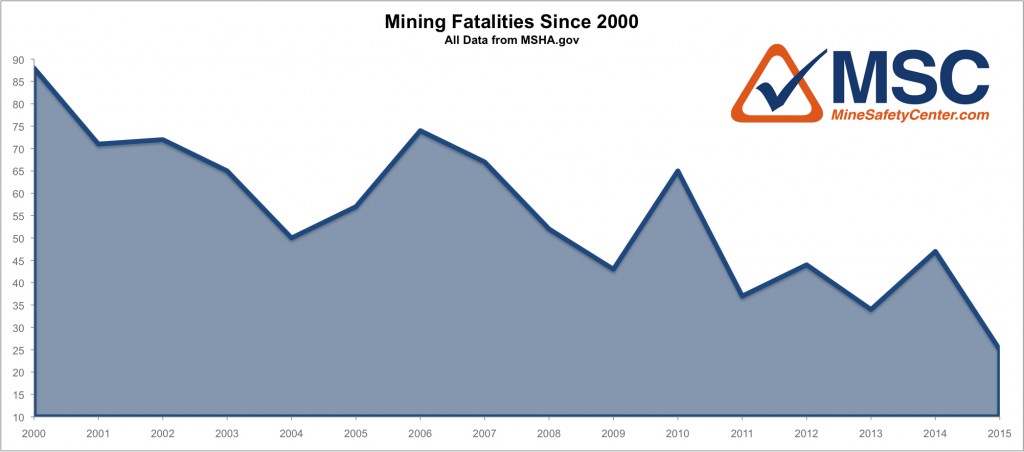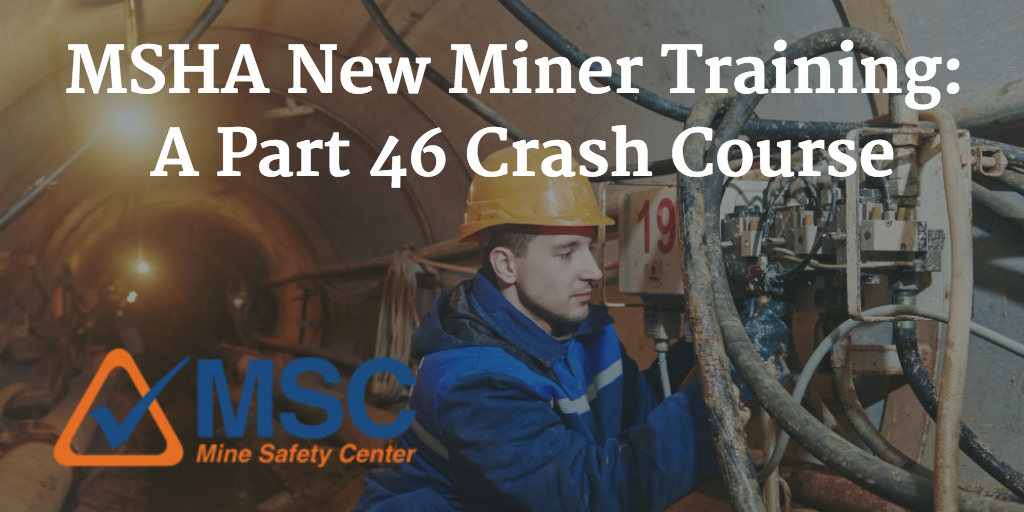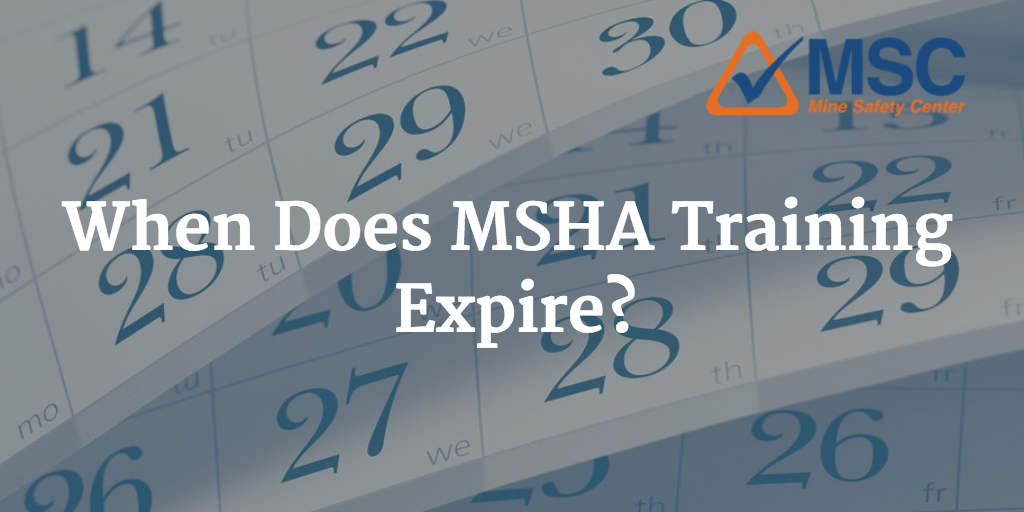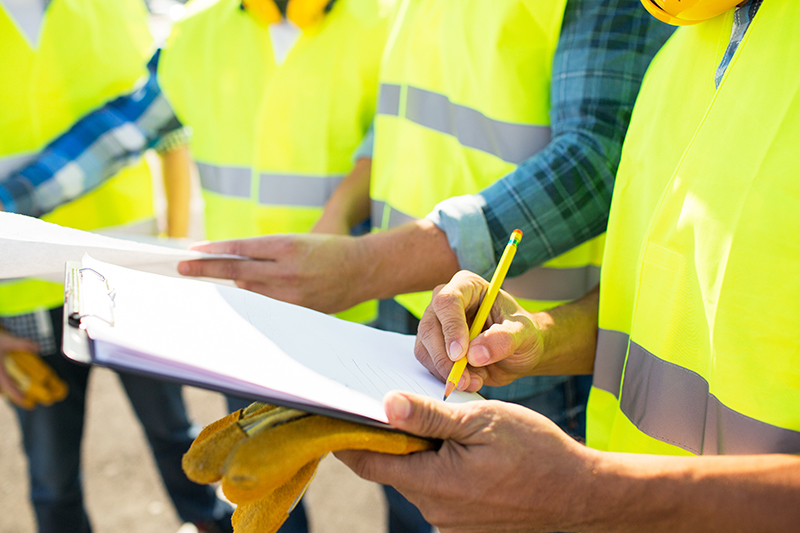
MSHA Part 46 Online Training Saved This Busy Contractor’s Time
Bill McCasey of Swan Electric, Inc. needed MSHA Part 46 Online Training as soon as possible for a job. But they needed a flexible training schedule to avoid shutting down their main business. Swan’s manager decided that online training was the fastest, most affordable way to fulfill their training obligations.
Swan needed their MSHA Part 46 online training company to meet 5 requirements:
- 24/7 access to training that could be done on their schedule
- Assistance with MSHA’s complex paperwork
- Trustworthy, high quality training
- Management tools to ensure all their employees finished the training on time
- The best value for their money
After thoroughly researching their options, Swan decided the Mine Safety Center’s online Part 46 training met all their needs. Why?
Training was available 24/7 to all Swan Electric employees, anywhere with an Internet connection. They could sign up a new employee in less than 5 minutes and start their training any time. Their employees could even stop and start modules as needed. Through MSC’s management reporting tools Bill was also able to remotely track his employee’s progress to make sure they completed the training on time.
Bill and his employees also took advantage of MSC’s Free Automated MSHA Training Certificates. When each employee finished their course, the system automatically completed nearly all of the necessary paperwork and provides employers with electronic training records. This dramatically reduces the opportunity for human error and the MSHA fines that can result.
Bill knew the training covered all the necessary topics to safely be in site and meet requirements because the training was designed by Kim Redding, a former MSHA inspector and top mine safety consultant.
Swan Electric was able to fulfill all of MSHA’s part 46 training requirements quickly with zero downtime and correct paperwork.
MSHA Lock Out Tag Out Enforcement Update
More information has come out since last week’s MSHA Lock Out Tag Out emphasis announcement.
MSHA inspectors will focus heavily on locking out energy sources before performing any maintenance or repairs. In particular, MSHA singled out 1 mechanical lock out standard and three electrical lock out standards that will be emphasized:
Mechanical Lock Out
- 30 CFR §56/57.14105 – Procedures during repairs or maintenance
Electrical Lock Out
- 30 CFR §56/57.12006 – Distribution boxes
- 30 CFR §56/57.12016 – Work on electrically powered equipment
- 30 CFR §56/57.12017 – Work on power circuits
MSHA Lock Out Tag Out Inspections
There is only one way MSHA inspectors can check if a company is using proper lock out tag out procedures. When the MSHA inspector shows up (unannounced as always) he will go directly to the motor control center. If any maintenance is in progress he’ll be checking for:
- All energy sources isolated and locked out
- An individual lock for each person performing the maintenance
- A lock for which only one person has the key
- A tag with each person’s name and the date on each lock or
- One tag with the name of every person performing maintenance and the date
Isolating and locking out all energy sources seems to be the largest point of emphasis. In addition to what you’re working on, you must lock out any parts or machines or material that could potentially injure. For example, if you’re working on a cone crusher you must lock out the crusher itself. But you also need to lock out the belts going to and from the crusher. There’s a very good example of this in MSC’s Rules To Live By section which is available in our free trial.
Lock Out, Tag Out, Try Out – Every Time
In a great post, ISHN magazine outlined the most common problems with Lock Out Tag Out. Even after 16 years it’s spot on. I would only add one point. While “trying out” isn’t required by law, it is a best practice. You can’t truly know something is locked out until you’ve tried to turn it on and nothing happens. As MSHA pointed out in their announcement, “it’s not locked out until you’ve tried it out.”
Why do we try out? Our expert Kim Redding was recently consulting at a Cement plant where they needed to replace a belt. Every energy source to the conveyor was identified and locked out; not an easy task when there are over 5,000 breakers in one breaker box. The employees followed every regulation and protocol to the letter. But what happened when they tested their lock out? The belt turned on. Someone had mislabeled breaker, a mistake that seems small until someone’s life is on the line. We all know what could have happened if those workers hadn’t tested their lock out.
Including where you’re working, either the location or equipment, on tags is another best practice. You’re not required by law to include this information, but it’s a very good idea. It only takes a few extra seconds and could prevent a serious accident.
MSHA lock out tag out enforcement will increase in the coming months. Are you ready? To prepare, you can take our free Lock Out Tag Out module.
Lock Out Tag Out Procedures Will See Heightened Emphasis from MSHA in 2016
Lock Out Tag Out procedures have been an essential part of mine safety for years. This morning, Neal Merrifield of MSHA took the opportunity to reiterate “how important it is to develop and implement an effective mine-specific Lock – Tag – Try program.”
He goes on to say, “since 2005, 28 metal and nonmetal miners have died in accidents in which electrical power was not disconnected and locked out or other energy sources were not controlled before work was begun on power circuits or mechanical equipment.”
“MSHA standards require that before working on electrical circuits, power must be disconnected, switches locked out and warning notices posted and signed by those performing the work. In addition, power to machinery or equipment must be off and the machinery or equipment blocked against hazardous motion before beginning repairs or maintenance.”
Expect Increased Lock Out Tag Out Try Out Enforcement
“MSHA will stress the importance of concentrating on effective lockout procedures by focusing additional resources on increased enforcement and education and outreach, including walk-and-talks….Metal and Nonmetal inspectors and Educational Field and Small Mines Services personnel will be visiting mines, discussing safe work practices with miners and reminding everyone to maintain their focus on safety.”
Lock Out Tag Out Procedures Must be in Your Standard Operating Procedures.
Lock Out Tag Out Procedures should really be known as Lock Out Tag Out Try Out. No machine is truly tagged out until you have tried to turn it on and nothing happens. MSHA is re-emphasizing their effort to make sure every person on a mine tries out a machine before they consider it safe to conduct work. Lock Out Tag Out Try Out should be an integral part of every company’s standard operating procedures.
What This Means For 2016
As we all know, MSHA is much more inclined to increase enforcement and fines than to educate. I’ve discussed MSHA’s inclination to attribute decreased fatalities with the recent increase in fines.
Review your Lock Out Tag Out Try Out procedures. Do they need updating? Now would be a great time to focus a morning safety meeting or toolbox talk on LOTOTO.
Make sure you emphasize Lock Out Tag Out Try Out in your MSHA training this year.
Stay safe everyone.
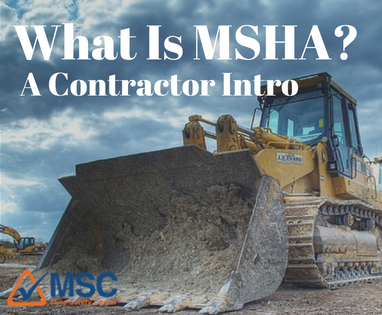 You landed your first mine contract.
You landed your first mine contract.
Great! … Now what? You’ve never dealt with mine safety regulations before and you’re overwhelmed with all the questions that need answers: What does MSHA stand for? What is MSHA? What’s the difference between MSHA and OSHA? How do I avoid these giant MSHA fines I’ve hears about? How do I get everyone in my company MSHA compliant and ready for work? What is MSHA training? What questions should I ask but don’t even know to ask?
The amount of info you need for MSHA compliance can be overwhelming, I absolutely agree.
The good news is you’re asking questions (and smart questions to boot).
The second part of the good news? You’ll get answers to all those questions (and more) on the Mine Safety Center’s site.
What Does MSHA Stand For? And What is MSHA?
MSHA stands for the Mine Safety and Health Administration. MSHA is an agency in the Department of Labor and was created when Congress passed the Federal Mine Safety and Health Act of 1977. MSHA strictly enforces the safety and health regulations (including the corresponding paperwork) within the Mine Act at all mining and mineral processing operations in the United States, no matter how big or small.
The Mine Act was the first time mine safety training became mandatory in the U.S. It also instituted many other essential safety rules through the 30 CFR Part 56 and 57 standards.
For more, here is former MSHA inspector and Mine Safety Center expert, Kim Redding:
What Is MSHA’s Mission?
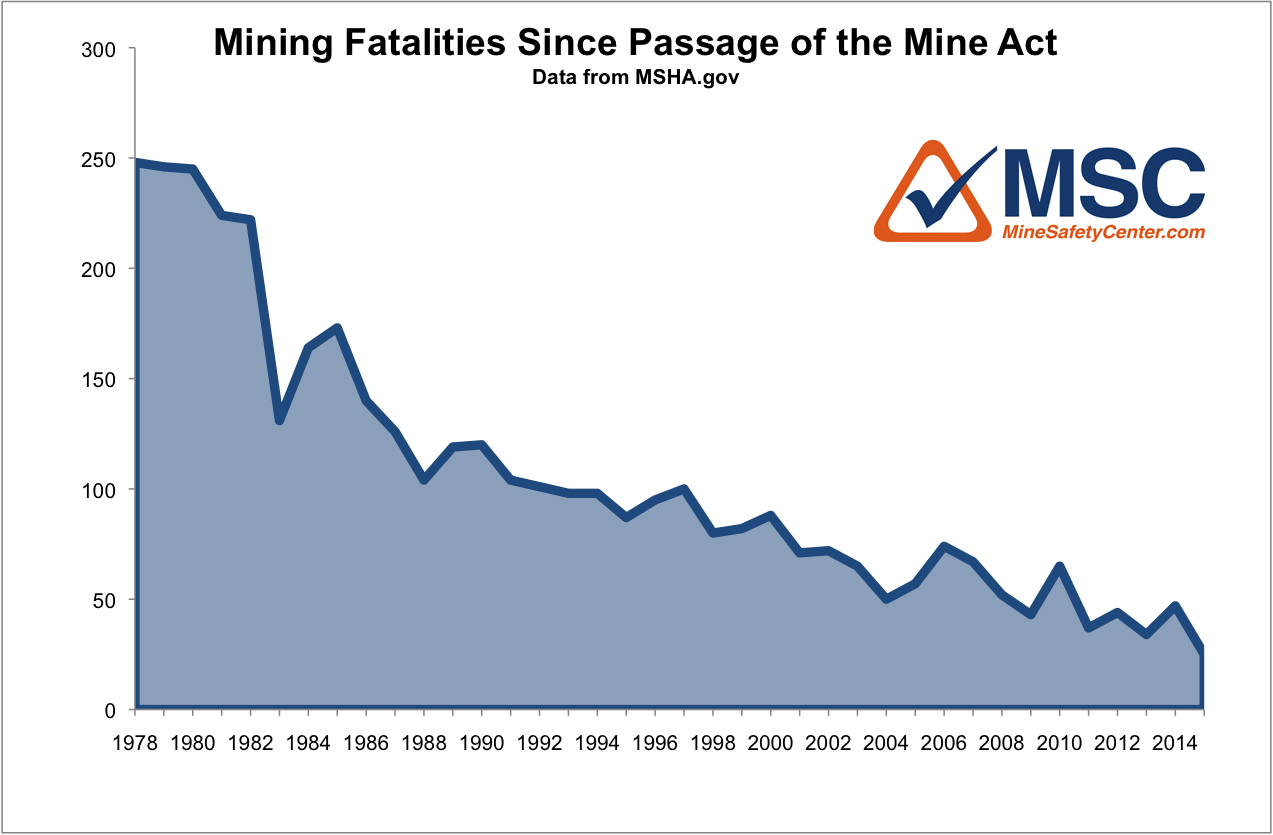 MSHA’s mission is to prevent deaths and injuries at America’s mines. According to the fatality data they’re doing something right.
MSHA’s mission is to prevent deaths and injuries at America’s mines. According to the fatality data they’re doing something right.
MSHA enforces the law through a mixture of inspections, education, and outreach. Since 2010 there has been a heavy emphasis on inspections and writing violations.
What is MSHA’s Contractor Authority? Does MSHA Regulate Contractors Too?
Does MSHA regulate contractors as well as miners? Yes, MSHA regulates anyone that conducts work on a mine, regardless of the type of work performed.
Note: A miner is any person, including operators or supervisors, who works at a mine and who is engaged in mining operations. This definition includes independent contractors and employees of independent contractors who are engaged in mining operations and any construction worker who is exposed to hazards of mining operations.
Everyone must comply with MSHA regulations, from the mine owner to the guys refilling the vending machines.
The Mine Act gives MSHA much broader oversight and stronger enforcement capability than OSHA. On an OSHA work site, a contractor may go his whole career without seeing an OSHA inspector. OSHA inspectors usually don’t show up unless there is a hazard complaint or an accident with a serious injury or fatality. But under the Mine Act, surface mines must be inspected no less than twice per year and underground mines are inspected no less than four times a year.
Officially, contractors must receive comprehensive training if they are exposed to hazards of mining operations for frequent or extended periods. But lately, MSHA seems to have expanded their definition of “frequent.”
Recently we’ve conducted a lot of New Miner MSHA training for contractors who have been doing jobs at the same mines for 20 years. Why? Mines are under pressure from MSHA. Last year MSHA declared an emphasis on contractor compliance and mines are attempting to make sure they have their bases covered.
MSHA and OSHA – What’s The Difference?
This is a big topic that deserves its own post. But I feel it should be briefly addressed here. The major differences between MSHA and OSHA are:
- MSHA has an Open Search Warrant for every mine in the U.S. You must let them inspect anything they request. If you refuse you get an automatic $50,000 fine and the inspector will come back with Federal Marshals
- A minimum of two inspections every year
- MSHA Inspectors can close a mine without a court order
- MSHA can institute civil penalties (also known as personal MSHA fines) against management that must be paid with their own money. It’s illegal for companies to pay civil fines.
- MSHA can institute criminal penalties for accidents even when an incident doesn’t involve a fatality.
- Miners may bring discrimination cases against a company based on safety complaints.
So What Is MSHA Again?
What does MSHA stand for? The Mine Safety and Health Administration. What is MSHA? MSHA was created to keep everyone working on a mine safe – and the fatality statistics show they have. But MSHA can also cost companies a lot of money if they’re not compliant.
That brings us to the next big question:
What do we need to do so we can start work? How do we get MSHA Compliant?
Mine Fatalities – 100 Years of Progress
Mine fatalities in the U.S. have dropped precipitously since the first regulatory agency was established in 1910. As 2015 comes to a close let’s look back and see the progress in 3 charts. All data comes from MSHA.gov.
The Long View
In 1917, 3,679 men left for work never to return home. The average number of mining fatalities from 2011 to 2015 was 38. While 1 life lost is 1 too many, we must acknowledge the astounding progress in mine safety. Fatalities have decreased nearly 10,000% in less than 100 years.
The sheer number of mine fatalities in the early 20th century is staggering. On average 2866 mining deaths occurred every year between 1915 and 1930, nearly 8 each day. 8 families losing a father, son, or brother every day. That’s unimaginable now.
Mine Fatalities After the Mine Act
The Federal Mine Safety and Health Act, or Mine Act, was passed in late 1977. This large and important piece of legislation brought all U.S. mines under federal jurisdiction and implemented a significant number of safety regulations. The Mine Act has far-reaching ramifications throughout the U.S. mining industry.
Significant provisions include:
- Mandatory safety training
- Annual inspections of all surface mine
- All underground mines are required to have mine rescue teams
Let’s take a look at mine fatalities in the decades since the Mine Act was enacted:
A substantial effect is apparent. Since the Mine Act’s passage, deaths have significantly decreased. Mine fatalities dropped by 53% from the decade before the Mine Act was passed to the decade after.
Before the Mine Act:
Average of 356 mine fatalities per year between 1967 and 1976
After the Mine Act:
Average of 189 mine fatalities per year between 1978 and 1987
Progress Since 2000
Finally, let’s look at the beginning of the 21st century.
Another significant drop. Mine fatalities have gone down 63% from the first half of the century to the second. From 85 deaths in 2000 to 45 in 2014 and 25 in 2015.
Substantial progress has been made, but even one death is too many. Mine operators and employees will continue to work towards that goal.
MSHA New Miner Training: Where To Begin?
There are several training requirements everyone must complete before they are given MSHA Part 46 certification and cleared to work on a mine. For a person who has never worked on a mine the first requirement is MSHA New Miner Training.
In this post, I’ll discuss the requirements of Part 46 new miner training. I’ll go through the Part 48 requirements in a later article. If you’re unsure whether you need Part 46 or Part 48, you need a definitive answer as soon as possible. You can find out if you need Part 46 or Part 48 training by answering a few, simple questions.
Who Should Take An MSHA New Miner Training Course?
- Newly Hired Mine Employees
- Construction Personnel
- Maintenance Personnel
- Mine Contractors
To meet MSHA certification training requirements under Part 46, new miners must receive at least 24 hours of mine safety training from a “Competent Person” designated in their Part 46 Safety Training Plan.
MSHA New Miner training must include a minimum of four hours of instruction in nine specific areas before a new miner can begin work.
MSHA New Miner Training Requirements: Mandatory Topics
- Introduction to the work environment, mine tour, mining methods and operation
- Instruction on recognition and avoidance of hazards
- Emergency procedures, escape, and firefighting
- Health and Safety aspects of the tasks assigned
- Instruction on statutory rights of miners and their representatives
- Authority & responsibility of supervisors and miners’ representatives
- Introduction to the rules and procedures for reporting hazards
- First Aid and CPR
- Introduction to the mine’s Hazard Communication program, or HAZCOM.
Part 46 regulations require at least 4 hours of MSHA new miner training prior to the trainee working on-site. This initial training allows the miner to work on a mine site under the observation of an experienced miner while they complete the rest of their MSHA New Miner training. Most companies will have trainees complete at least 8 hours of classroom training.
Part 46 also has time restrictions, though they generally aren’t an issue. The trainee must complete first aid/CPR training within 60 days of starting their training. The trainee must also complete their entire MSHA new miner training within 90 days of starting the training.
Where can you complete the classroom requirements of new miner training?
That depends on your needs. You can hire an MSHA trainer to come to your office. You can find a local class to attend. Or you can move at your own pace by completing large portions of your MSHA new miner training online.
What about the other required hours?
The remaining hours of training cover topics that teach health and safety at the mine. On the job training is not mandatory but highly recommended. Other required training includes:
- Task Training
- Site-Specific hazard training
How do you complete the rest of your MSHA training? Get step-by-step instructions through all the required MSHA training and paperwork. Download your free Contractor Success Kit to speed up and simplify your MSHA compliance.
Once all of your training is complete, what’s the next step? As soon as anyone finishes new miner training, they need to correctly and completely fill out their Part 46 New Miner certificate. And (of course) it’s a bit more complicated than it sounds.
Click here for a step by step guide to correctly filling out your new miner training paperwork.
Does MSHA Training Expire? Yes, But…
“Does MSHA training expire?” It’s one of our most asked questions. The short answer is yes. But as with most government rules there are exceptions and nuances. To remain compliant you must take Annual Refresher training every year.
The rules differ on how long you can go without taking Annual Refresher without starting from scratch. Depending on what the mine operation is pulling out of the ground you either need Part 46 or Part 48 training. Need a refresher on 46 vs. 48? You can learn the difference between Part 46 vs. Part 48 here.
MSHA Part 46 Training
Part 46 certification must be renewed every year with an 8 hour Annual Refresher training. There is a small amount of wiggle room. The training does not expire after exactly 365 days. You are compliant until the end of the calendar month one year after your last Annual Refresher training.
Need to read that again? Welcome to MSHA regulations. Let’s try that in plain English. If you finished your MSHA training (training complete, with the certificate signed and dated) on January 3rd you have until the following January 31st to finish your next Annual Refresher training. Or you could make your life easier and use Mine Safety Center’s online MSHA training. Our system will send you an email 60 and 30 days before your MSHA training is due.
Want more MSHA compliance tips from a former MSHA inspector? Download our Free Contractor Success Ebook. You’ll get the info and forms you need to get up to speed.
Does MSHA training expire completely if you don’t finish within the 1-year window?
No. You are no longer certified to go on a mine after 1 year-(ish) and you will need Refresher training if you plan on working on a mine during that year. But Part 46 training doesn’t fully expire until 2 years after your last MSHA training. At this point, you don’t need to start New Miner training from scratch.
This can be useful for contractors. If you don’t have a mine contract one year you do not need to spend the time or money to take MSHA training. But you will need to make a choice at the end of the second year. If you or your employees don’t take a Refresher Training within 2 years you will need to re-take your 24 hour New Miner training and re-complete your New Miner Training certificates.
Part 48 MSHA Training
All of the above rules stay the same if you are working on a Part 48 surface mine.
But underground Part 48 mines have different regulations.
30 CFR Part 48 states that an individual who receives 40 hours of training and works for 12 months as an underground miner is considered an “experienced miner.” MSHA rules require any experienced underground miner who has been away from mining for more than five years receive 8 hours of “experienced miner” training before returning to the mine.
You will need to re-take 40 hours of “new miner” training from a blue card certified trainer if you do not have the 12 months of mining experience. Some States have additional training requirements for miners. Contact the appropriate agency in your state to learn if this applies to you.
So, does MSHA training expire? Yes, but the rules change depending on your specific situation.
One Last Thing
It’s essential to accurately complete your certificates and hold on to your training records, especially your New Miner certificate. There have been instances where contractors lost their New Miner certificate and were forced to completely retake their 24 hour training. For MSHA the proof is always in the paperwork. You can ensure your paperwork and company are MSHA compliant by downloading the Contractor Success Kit. This free Ebook walks you through the MSHA compliance step-by-step to make sure you’re protected.
Need more MSHA compliance info? Download our free Contractor Success Ebook.
MSHA Confined Space Enforcement To Increase Dramatically
I just received an alert on MSHA confined space enforcement that needed to be passed along. Due to recent serious injuries and fatalities MSHA will be “placing special emphasis on enforcing its standards related to entering bins, hoppers, silos, tanks, and surge piles… by focusing additional resources on increased enforcement attention, education and outreach, including walk-and-talks,” said Neal Merrifield.
This MSHA confined space enforcement emphasis is just the latest in a long line of MSHA attempts to increase mine safety through fines and enforcement. The mining community needs to prepare for the imminent increase in MSHA enforcement. To help mines and mine contractors get ready and keep workers safe we’re offering our full Intro to MSHA Confined Space training for free.
The following is the full letter regarding the MSHA Confined Space Entry Alert from MSHA M/NM Administrator Neal Merrifield. All emphasis is added.
Unsafe work in confined spaces has led to miner deaths and injuries in the metal and
nonmetal mining industry. Recent tragic incidents include: a fatality while cleaning the
inside of a tanker railcar and a miner being severely burned during maintenance inside
a baghouse screw conveyor hopper. To address these regrettable occurrences and
help prevent similar instances in the future, MSHA will be placing special emphasis on
enforcing its standards related to entering bins, hoppers, silos, tanks, and surge piles.
MSHA and the Industrial Minerals Association-North America (IMA-NA) have engaged
the issue of confined spaces as a project within the Alliance between the two
organizations. We recommend conducting a hazard assessment and implementing a
permitting system as part of a safe entry standard operating procedure (SOP).
Many mining and milling workplaces contain areas that are considered “confined
spaces” because, while they are not necessarily designed for people, they are large
enough for workers to enter and perform certain jobs. A confined space also has limited
or restricted means for entry or exit and is not designed for continuous occupancy.
Confined spaces include, but are not limited to, tanks, vessels, silos, storage bins,
hoppers, vaults, pits, manholes, tunnels, equipment housings, ductwork, pipelines, etc.
Metal and Nonmetal (MNM) regulations related to confined space that MSHA enforces
include: 30 CFR §§56/57.5001(a); 30 CFR §§56/57.5002; 30 CFR §§56/57.5005(c);
30 CFR §57.5015; 30 CFR §§56/57.14105; 30 CFR §§56/57.15005; and
30 CFR §§56/57.16002.
These standards regulate hazardous atmospheres; material that has the potential to
engulf an entrant; walls that converge inward or floors that slope downward and taper
into a smaller area which could trap or asphyxiate an entrant; and any other recognized
safety or health hazard, such as unguarded machinery, exposed live electrical wires, or
high heat.
Because confined spaces are potentially dangerous, employers should evaluate all
confined spaces in which their employees work to determine whether hazards exist or
whether the work to be done in the space can create hazards. MSHA will place special
emphasis on confined spaces over the next several months by focusing additional
resources on increased enforcement attention, education and outreach, including walk-
and-talks. We are encouraging the mining industry to do the same. MSHA will provide
the mining industry with additional information on the importance of having an effective
MSHA Confined Space Entry program. Please make sure that information gets distributed.
MNM inspectors, joined by Coal inspectors and Educational Field and Small Mines
Services personnel will be visiting mines, calling attention to these potentially hazardous
conditions and discussing safe work practices with miners. Please join MSHA and
IMA-NA in this special safety outreach and help us spread the word to the miners at
your operations. This is the time to be proactive. Assure that an effective Confined
Space Entry program is implemented, that miners are trained on program specifics and
are task trained to recognize and avoid hazards, so they can go home safe and healthy
at the end of each shift.
A link follows to an MSHA Confined Space Entry Alert recently published on MSHA’s website:
http://www.msha.gov/Alerts/confined-space-entry-ha1109.pdf. Also, for more
information on the confined space mining deaths that have occurred since October 2013 and
Please use the photos and descriptions to prompt discussions about fatalities and how to prevent them.
Standard Operating Procedures
It’s the worst-case scenario. Someone has been injured at a job and your employees need help. But you’re working a mine on this job; a mine with multiple locations, different addresses with the same name and no Standard Operating Procedures to guide you.
Your workers have 911 on the line, ready to help. But they don’t know which site they’re on or how to get to their location. They have an injured man’s rescue at their beck and call but no way to help.
Sound far-fetched? This would never happen at one of your jobs? This unfortunate event happened to one of my contracting clients. 2 of their employees had 911 on the line. But instead of being able to assist in his rescue, they witnessed a man die of a heart attack right in front of them.
What could these contractors have done to prevent this tragedy? They needed directions to their location of the physical address of the mine site to get help from Emergency Services. Anyone in the company could have easily gotten this information by asking a few simple questions before they started work.
Is using a map app on your smart phone an option? That’s a risk I’m not willing to take. Many mines are in extremely remote areas. Reception can be spotty or non-existent. Why chance it when you can easily avoid a tragedy by asking 1 question?
Can’t 911 just track your phone’s GPS location like in a TV crime show? No, there are Federal privacy laws in place that prevent Emergency Response from accessing GPS information. If you can’t articulate your location, there’s nothing a 911 operator can do.
One advantage these contractors had was cell phone reception. But what if they didn’t? Would they have known where to get a signal? Or have another form of communication available like a CB radio?
Standard Operating Procedures, or SOPs, are a safety net in place for that worst-case scenario. So I need to ask; do you have standard operating procedures in place for your mine jobs? Do you have emergency procedures for each mine you service?
If you don’t you’re not alone. But these simple procedures on a checklist can save a life.
What are the standard operating procedures your company must have in place? I’ve designed a 3 page standard operating procedure template checklist available as a free download as part of our Contractor Success Kit.
There may be procedures that don’t apply to your company and that’s ok. This checklist is meant to be a starting point, a framework to build on. Designing standard operating procedures is about asking the right questions so you can be prepared if something does go wrong.
The worst-case scenarios may never happen, and we hope they never do. But if a tragedy does occur and you’re in a position to make a difference, don’t you want to be ready? You can. All it takes is a little time and thought to implement standard operating procedures at your company today.
MSHA Training Summit Agenda Released- A Quick Analysis
The annual MSHA Training Summit was held on October 28th. The agenda was released 2 days later. Let’s take a look at some statistics that jumped out at us while going through the agenda.
- The unfortunate trend of injuries and fatalities on Part 46 mines continues. 3 of 5 fatalities in the 3rd quarter occurred on Part 46 mines. That’s 60% of all fatalities. All indications point to increased MSHA inspections and scrutiny on Part 46 training and compliance.
- Expect MSHA’s focus on contractor training and paperwork to continue. 2 of the 5 fatalities in 2015 Q3 were contractors.
- The majority of serious accidents also occurred on Part 46 sites. 3 of the 4 highlighted “serious accidents” occurred on Part 46 sites. 2 on mines and 1 at a cement plant.
- So far in 2015, MSHA has “visited” 780 mines. The splits of M/NM vs. Coal mines inspected will be interesting. MSHA recently announced they were transferring inspectors from coal to the M/NM side.
- Of those 780 mines, approximately half are classified as “small mines.” This continues MSHA’s trend from the past 2 years of focusing significant resources on small mines. Now would be a good time to audit your MSHA compliance and training records if you own or manage a small mine.
- MSHA has conducted 3,174 Training Plan Reviews.
- MSHA has also conducted 3,769 Training Program Field Reviews.
MSHA has already begun a “surge” on M/NM mines, dramatically increasing the number of inspections with an emphasis on Part 46 operations. Based on Joe Mains’ history, he will increase the number of inspections until injuries and fatalities decrease.
The MSHA Training Summit can be a good indicator of initiatives in the coming year, though it may feel like reading the tea leaves at times. It’s important to analyze what MSHA might highlight to prepare your company. You can see the full MSHA Training Summit agenda for yourself here.

